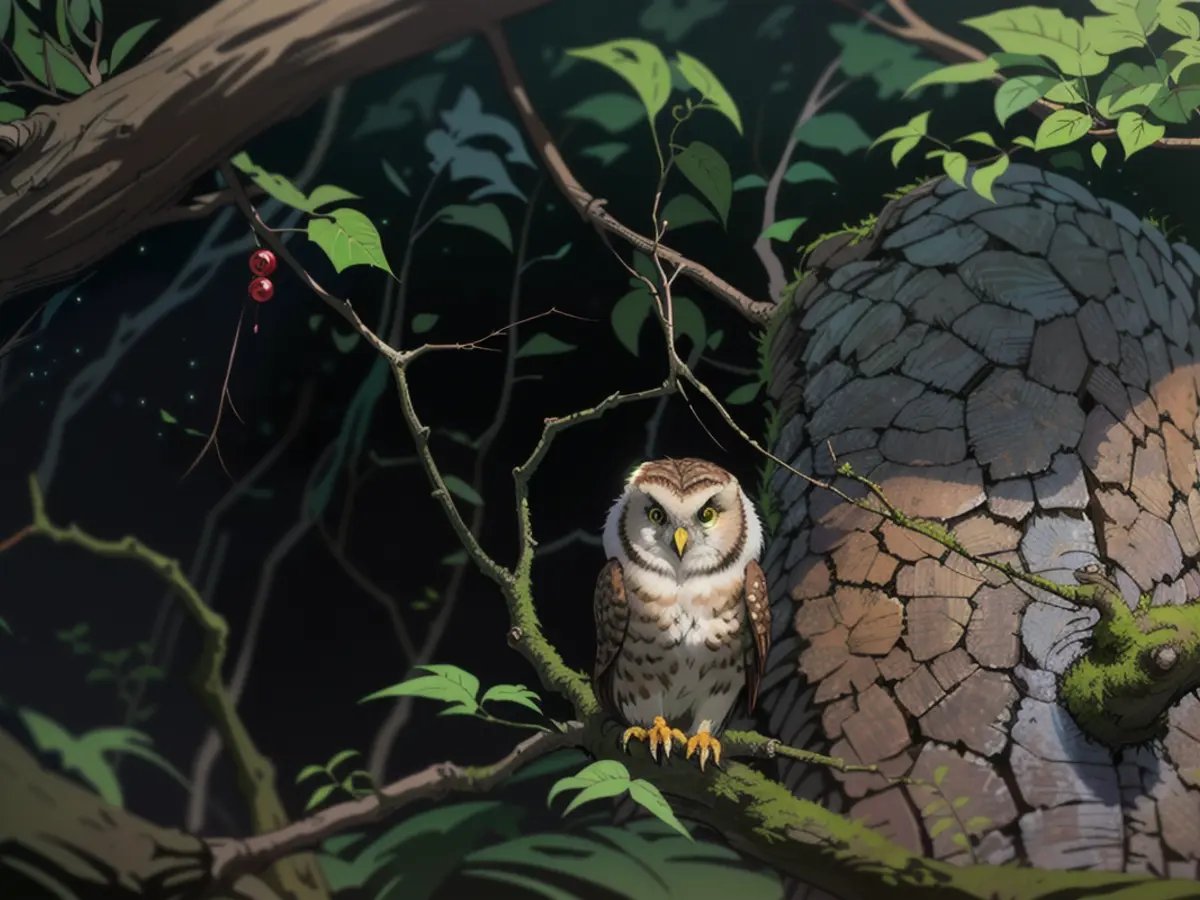Return initiative - Outside the Bavarian Forest, a brood of great horned owls was found.
In Steinwald Nature Park, two Eagle Owl couples have been spotted breeding, marking Germany's first wild Eagle Owl breeding outside of the Bavarian Forest. This groundbreaking discovery was made by the VLAB, an organization specializing in landscape management, species protection, and biodiversity in Erbendorf, Tirschenreuth District. The VLAB's chair, Johannes Bradtka, expressed his enthusiasm, remarking, "I'm still shaking."
To reintroduce these birds back into the wild, VLAB initiated a ten-year project in Northeast Bavaria in 2017. So far, 83 Eagle Owls have been released in the region's Middle Mountain Forests. Among them, two pairs of breeding owls have been identified, and five young owls have been spotted. "It's fantastic news," stated Michaela Domeyer, the project's leader. "Not only does this mean that the Eagle Owls feel at ease in their ancestral habitat, but it also shows our work is on the right track."
Over the years, Eagle Owls come from various zoological institutions and other falconries in Germany, France, and Belgium to ensure a genetically diverse population. This population aims to expand throughout the forests of Northeast Bavaria and Northwest Bohemia, connecting with the isolated population in the National Parks of Bavarian Forest and Šumava/Bohemian Forest in the Czech Republic.
All bird releases are carefully acclimated in large aviaries, preparing them for the wild. The VLAB strategically placed about 220 nest boxes in the forests of Fichtelgebirge, Hessenreuther Forest, Upper Palatinate Forest, Steinwald, Grafenwöhr Training Area, and beyond the border in the Czech Republic's Bohemian Forest for the birds' convenience.
The Eagle Owl's return is seen as a significant step in species protection and the pursuit of biological diversity in Germany, according to VLAB. The organization plans to be more vocal in advocating for forestry companies and woodland owners for the preservation of dead wood and old trees, providing crucial breeding spots for Eagle Owls.
Standing at approximately 60 centimeters long, Eagle Owls have an impressive wingspan of 125 centimeters and can live up to 20 years. Germany considered them extinct since the 1920s' end.
Read also:
- Tough return to normality in snow and ice
- Fewer unauthorized entries: Domino effect through controls
- Trial against BND employee from mid-December
- Xhaka leads Leverkusen to triumph in cup tournament, scoring two goals.
- The VLAB, based in Erbendorf, Tirschenreuth District, is actively involved in nature conservation efforts in Germany, focusing on landscape management, biodiversity, and species protection, such as the Eagle Owl reintroduction project in Northeast Bavaria.
- The Eagle Owl's return to its ancestral habitat in Northeast Bavaria and Northwest Bohemia, including areas like the Bavarian Forest and Šumava/Bohemian Forest in the Czech Republic, is a significant contribution to nature conservation and species protection efforts in Central Europe.
- Following the successful breeding of two Eagle Owl couples in Steinwald Nature Park, Germany, several organizations, including those in Germany, France, and Belgium, have contributed by providing genetically diverse Eagle Owls for reintroduction to the wild in Northeast Bavaria's Middle Mountain Forests.
- To support the reintroduced Eagle Owls, the VLAB has strategically placed 220 nest boxes across various forests in Germany and the Czech Republic, including Fichtelgebirge, Hessenreuther Forest, Upper Palatinate Forest, Steinwald, Grafenwöhr Training Area, and the Czech Republic's Bohemian Forest.
- The German Eagle Owl's population expansion and establishment in Northeast Bavaria and Northwest Bohemia contribute to the overall biodiversity in the region, encouraging collaboration between forestry companies and woodland owners to preserve dead wood and old trees, providing crucial breeding spots for these magnificent creatures.
- The Czech Republic, as a neighboring country and an essential part of Central Europe's ecosystem, plays a vital role in the Eagle Owl's population expansion, creating essential connections between its isolated population in the Bavarian Forest and Šumava/Bohemian Forest National Parks.
Source: www.stern.de








